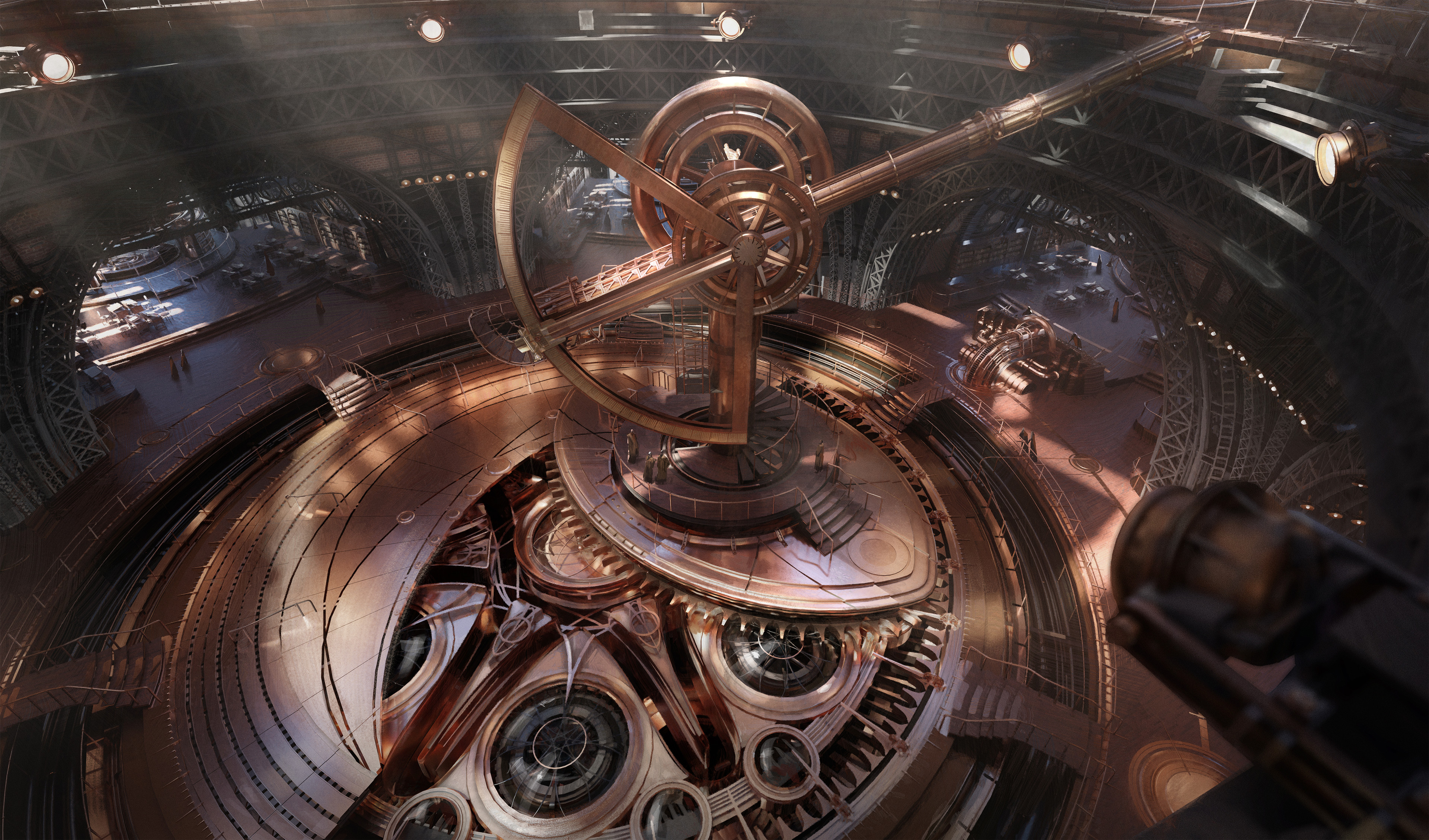The Imperial Observatory
The culmination of centuries of scholarly research and study, where man might see and touch the stars above
Purpose / Function
Built by The Ustanan Royal Academy in the year 4390, the Imperial Observatory was built as a marvelous, shining monument to the power of the Ustanan Concord and as an eternal reminder of the glorious mission of knowledge and understanding the country's scholars saw themselves as the foremost envoys of on behalf of scholars everywhere.
Altogether, it's purpose was simple - to allow for the scholarly elite of The Ustanan Royal Academy to turn their gazes to the final frontier - the great Star Ocean that dwells in the skies above the world, where only the unfathomably powerful can hope to reach and return from alive. Originally designed as a wondrous marvel of engineering that would allow for mundane mortals to glimpse distant stars and worlds, the Imperial Observatory was designed with the singular, glorious purpose of allowing the mortal races to peel back the mysterious veneer of the Star Ocean which had, until its construction, been the domain of the most powerful of mages and magic casters who relied on magic to traverse the vast black expanses in an eyeblink.
With its construction, it was hoped, no longer would curious but altogether weak scholars and researchers have to rely on the service of powerful mages to explore the Star Ocean - with the power of the Asadi Telescope, they would be able to glimpse the secrets that lay in the sea of stars above their heads so it could hopefully be documented, codified, and studied by present and future generations.
Alterations
Since its creation, the Imperial Observatory has undergone altogether little in the way of alterations - its original design was so grandiose and expansive that even now centuries later it continues to exist as a cutting-edge marvel of engineering that none can match or comprehend. What few alterations have been made have been largely concentrated on the Observatory's centerpiece, the Asadi Telescope - its systems have been upgraded in minor ways to allow for better and easier use, it has been given more advanced scripting and recording abilities so as to automatically document the sights seen during its many uses, and the installation of a system of "hardpoints" that allow for ease viewing of the various important points of interest discovered during the Observatory's operation so they do not have to be searched for.
Otherwise, its construction was solid and opulent - almost disgustingly so, as it nearly bankrupted not only The Ustanan Royal Academy but also the entire Ustanan Concord over its sixty year construction period...meaning that alterations have come slowly as the country has rebuilt its wealth.
Architecture
The architecture of the Imperial Observatory is a thing of glorious, gilded bronze,gold, and copper - a vast megalith constructed atop the southernmost mountain of the Tripalm Spine Mountain Range which overlooks the Yudao Rainforest. Its vast metallic dome treated with weather-resistant coatings and magical ministrations can be seen reflecting the light of the sun beautifully on mornings for dozens of miles around, and its massive complex that surrounds the main domed observatory building that contains the Asadi Telescope is a wondrous thing of similar make - curiously, almost no hard lines or edges can be found in the construction of the Observatory in favor of curved lines and rounded edges, giving it a very odd and alien appearance compared to all other buildings on the continent.
This strange architecture which was a large part of the reason why the Observatory took nearly six decades to built is said to have come straight from the mind of its creator and founder, Bartolo de Visconti - first head of The Ustanan Royal Academy and head of the faith of Asad the Patient, whose plans and ideas for the observatory were said to come from his dreams and nightmares.
Though it is located so far from the lands of the Ustanan Concord and the Ustanan people, it is said to be linked to the The Ustanan Royal Academy by means of a legendarily powerful teleportation circle to allow for quick travel between the two distant places.
History
Ever since its construction, the Imperial Observatory has sat as one of the most esteemed and respected places of learning on the continent - countless scholars yearn to be given the honor of entering its gilded metallic halls, and over the course of its operation it is said the yellow-robed scholars of the Observatory have documented countless new stars and worlds in the name of their patron Asad the Patient.
Additionally, the treatises and research papers put out by the esteemed masters of the Observatory are the stuff of wondrous legend that even the likes of the Archmages of The Archmage Council of the Coalition of Nine pay attention to and read with rapt interest.
Tourism
Access to the Observatory is strictly limited to only the most esteemed and/or promising members of The Ustanan Royal Academy, or those whom they trust implicitly - countless groups and beings across the continent yearn to uncover the mysterious secrets to the Observatory's function and learn them for themselves, so out of neccessity must the masters of the Observatory monitor the access to their reclusive mountaintop home with all the zeal of reclusive monks.
Founding Date
4390 ASK
Alternative Names
The Observatory, The Asadi telescope, The Gilded Dome
Type
Observatory / Telescope
Owning Organization



Comments